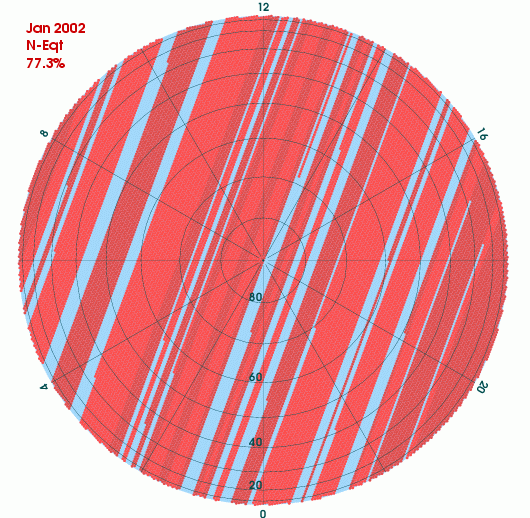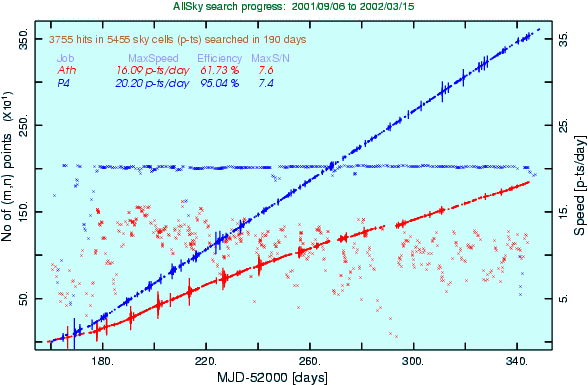If all seems OK a new backup copy is saved in the 'path' directory and a counter in the SafeCopy.log file is increased by one. If any of the conditions is not met, the progam repeats the checking a number of times (currently set to 15) and if the erratic condition persists, it finally substitutes 'filename' with a previously copied version.
When restoration from the backup copy takes place, this program appends a separate info line to the log file. In this case, and also if the 'filename' seems correct but has been created more than 'file_age' minutes ago, the program checks if the main AllSky search program (a job*.exe) is running. To this end it calls the following DOS command: 'pv -u -q job* > pv--tmp.log' (the pv command executes a process viewer utility PrcView, v 3.5.1.12b), and then searches thus created .log file for a process whose name begins with 'JOB'. The absence of such a process means the main program is not running so a batch named 'RunJob.bat' may be executed, if desired, and a record added to the log file. For nondedicated PCs the absence of JOB* process may indicate an intentional state of affairs (a user might have stopped it to run some more demanding program, e.g. a game) and automatic restart would then be unwelcome. Therefore there is a possibility to switch off the option of restarting the main program; this is done by setting a negative value for the command line parameter 'file_age'.
There is another use of the mentioned freeware utility, the PrcViewer. If our search program is run as a background process it considerably slows down other applications which may be annoying for users of PCs with clocks below say 1 GHz. The remedy lies in setting a lower priority for our program, unfortunately not all OS allow for this. The PrcViewer can do this for us even under Windows 98. Again, the priority change (usually from 'Normal' to 'Idle') can accompany each start of the search program.
Plotting progress maps

These postscript files are then converted (outside of the discussed program, e.g. with the GSView postscript viewer) to a binary format and later merged with corresponding sky maps. These mergers are presented on our main page and here.
Analysing PC performance in AllSky search
The program options are:
